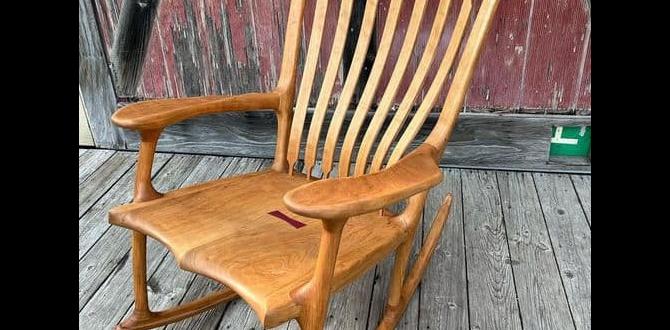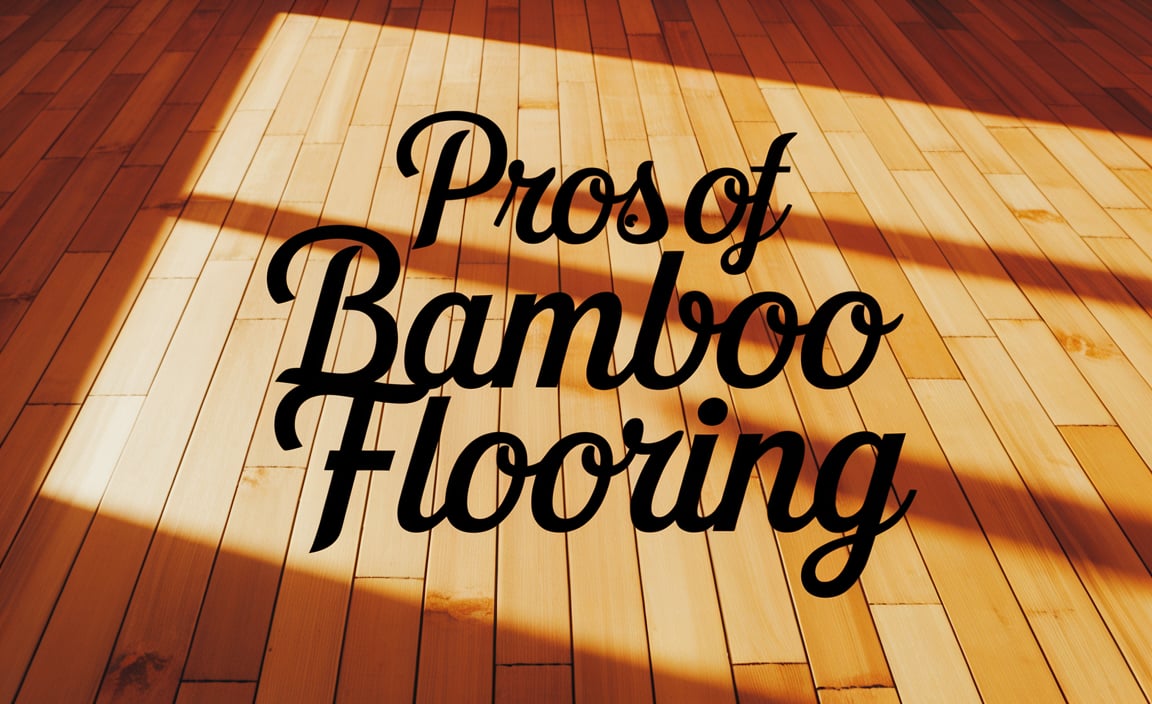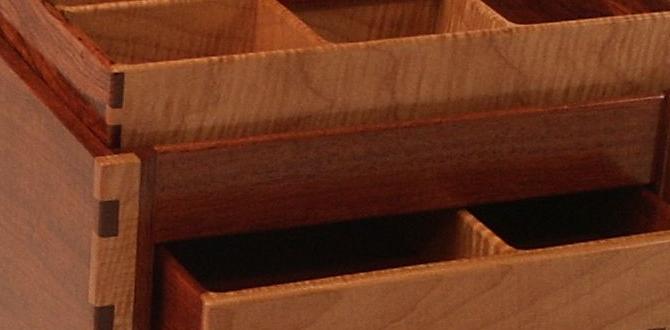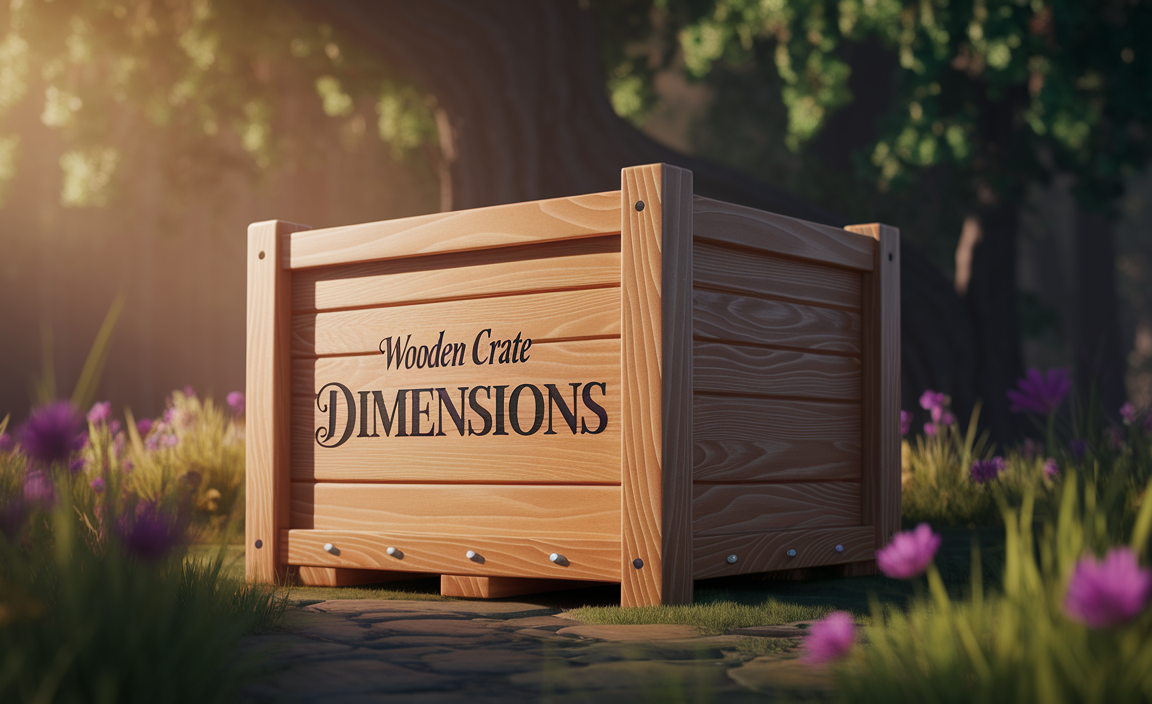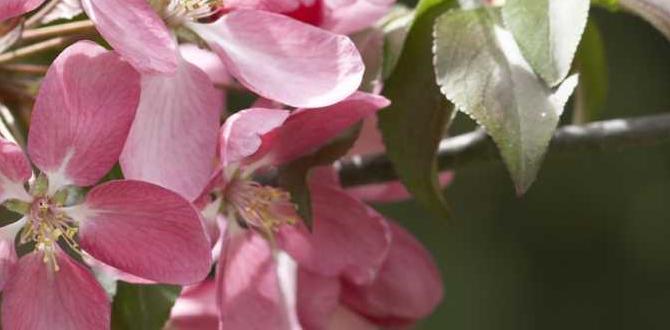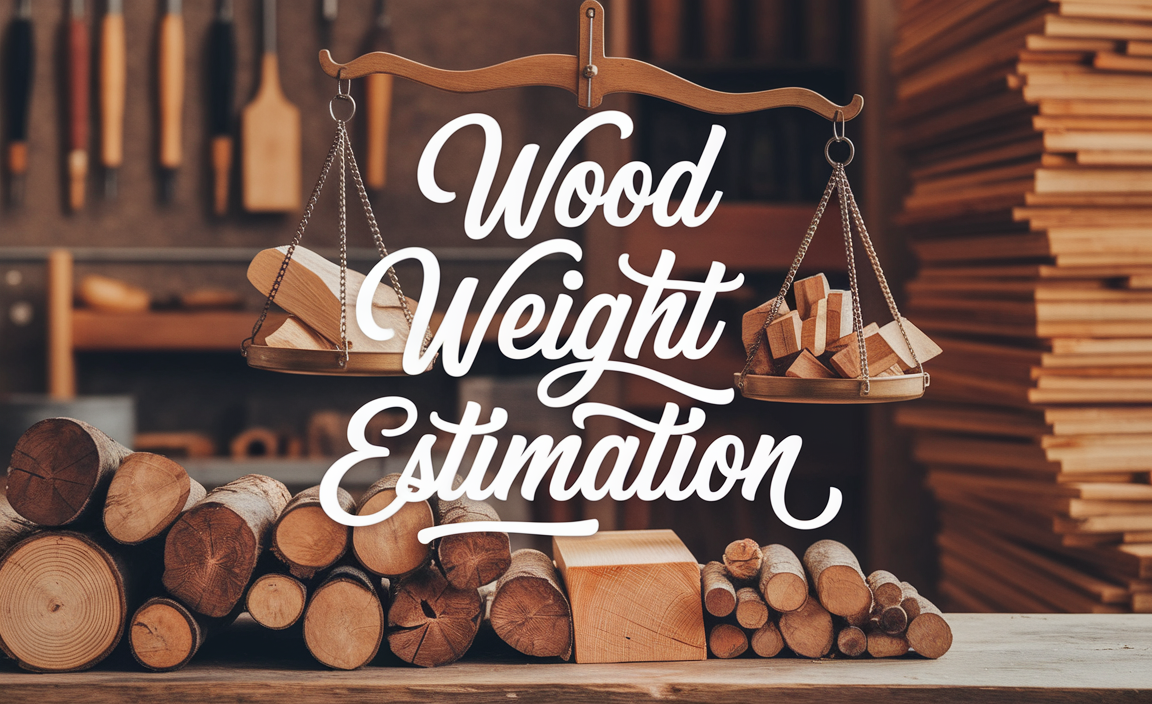Have you ever thought about what makes the best outdoor planters? Choosing the right type of wood can change everything. Picture your garden bursting with colorful flowers or lush veggies in beautiful wooden planters. But how do you pick the right wood?
Some woods can rot quickly. Others might split or warp in the sun. Imagine planting a lovely flower, only to watch it fall over because the wood isn’t strong enough. Knowing what type of wood for outdoor planters is key!
Fun fact: Some woods last longer than others when placed outside. It’s almost like they have superpowers! In this article, we will explore the best choices. Soon, you will know exactly what type of wood is perfect for your outdoor planters.
Table of Contents
What Type Of Wood For Outdoor Planters: Best Choices Explained When It Comes To Creating Outdoor Planters, Selecting The Type Of Wood Is Crucial To Ensure Durability And Aesthetic Appeal. Various Wood Types Offer Unique Benefits, From Resistance To The Elements To Their Environmental Impact. Here Is A Comprehensive Guide To Help You Choose The Best Wood For Outdoor Planters. 1. Cedar Cedar Is A Popular Choice For Outdoor Planters Due To Its Natural Resistance To Moisture, Decay, And Insects. Its Aromatic Oils Help Preserve The Wood, Making It A Durable Option. Additionally, Cedar Has A Beautiful Natural Appearance That Enhances The Look Of Any Garden. 2. Redwood Like Cedar, Redwood Is Resistant To Decay And Pests, Making It Ideal For Outdoor Use. It Has A Stunning Rich Hue That Adds Elegance To Your Planters. However, Redwood Can Be More Expensive Than Other Wood Types, But Its Longevity Often Justifies The Investment. 3. Pressure-Treated Lumber Pressure-Treated Lumber Is Often Used In Construction Due To Its Affordability And Accessibility. It Undergoes A Treatment Process To Resist Rot And Insects. Though Effective, This Type Of Wood May Contain Chemicals That Could Leach Into The Soil, So Consider Using A Liner To Separate The Soil From The Wood. 4. Teak Teak Is A Premium Choice Known For Its Incredible Durability And Resistance To Weather And Pests. Its High Oil Content Makes It Less Likely To Warp Or Crack Over Time. While On The Pricier Side, Teak’S Longevity And Beauty Can Make It Worth The Cost For High-End Outdoor Planters. 5. Composite Wood Composite Wood Is Made From A Blend Of Wood Fibers And Plastics, Offering Great Resistance To Decay And Fading. It Requires Minimal Maintenance Compared To Traditional Wood. While It Mimics The Aesthetics Of Natural Wood, Composite Materials Can Sometimes Lack The Authentic Charm Of Real Wood. Conclusion When Deciding “What Type Of Wood For Outdoor Planters: Best Choices,” Consider Factors Like Durability, Resistance To Decay, And Environmental Impact. Each Wood Type Has Its Own Unique Properties, So Choose One That Fits Your Aesthetic And Functional Needs, Ensuring Your Outdoor Planters Remain Beautiful And Lasting For Years To Come.

What Type of Wood for Outdoor Planters: Best Choices
Choosing the right wood for outdoor planters can greatly impact their durability and appearance. Cedar and redwood are excellent choices due to their natural resistance to rot and insects. Pressure-treated pine is a budget-friendly option but may require more care. Did you know that untreated wood can last up to five years depending on the climate? Understanding these options helps you make a smart and stylish planter choice for your garden.Understanding Outdoor Planter Requirements
Factors to consider when choosing wood for outdoor usage. Impact of weather elements on wood durability.Choosing the right wood for outdoor planters is important. First, think about how the wood will hold up against rain, sun, and wind. Some woods rot quickly, while others don’t. Weather can make wood weak or cause it to crack. Consider these factors:
- Moisture resistance: This keeps plants healthy.
- Sun exposure: Protects the wood from fading.
- Temperature changes: Ensures the wood stays strong.
Different types of wood can survive better in outdoors. For example, cedar and redwood resist rot well. This helps your planters last longer.
What type of wood should I use for outdoor planters?
You should select cedar, redwood, or treated pine. These woods resist water and pests. They also look nice! Choose wisely for better outdoor planters.
Types of Wood for Outdoor Planters
Softwoods vs. hardwoods: Key differences. Popular wood types: Cedar, redwood, teak, and pressuretreated pine.Choosing the right wood for outdoor planters can make a big difference. Softwoods like pine and cedar are lighter and often less expensive. Hardwoods, such as teak and redwood, are durable but usually cost more. Here are some popular options:
- Cedar: Naturally resistant to decay.
- Redwood: Beautiful and strong.
- Teak: Very durable and water-resistant.
- Pressure-treated Pine: Affordable and treated for longevity.
Each type has its own unique benefits. Choose the best one for your outdoor needs!
What is the best wood for outdoor planters?
The best wood varies by use but cedar and redwood are often top choices for their durability and resistance.
Cedar Wood: The Top Choice for Planters
Advantages of cedar for outdoor use. Natural resistance to rot and insects.Cedar wood is a superstar for outdoor planters! Its natural charm adds beauty, while its durability does a little happy dance. This wood is like a superhero, battling rot and bugs. Cedar contains natural oils that make it resistant to nasty wood-eating insects. Let’s face it, who wants to share their planters with creepy crawlies? Also, it can last for years without falling apart. Cedar means less worry and more time to enjoy your garden!
| Advantage | Description |
|---|---|
| Natural Resistance | Fights off rot and insects like a champ! |
| Longevity | Lasts for years, making your wallet happy! |
Choosing Redwood for Aesthetic and Durability
Benefits of redwood for outdoor aesthetics. Longlasting durability and sustainability concerns.Redwood is a fantastic choice for outdoor planters! Its rich color adds beauty to any garden. Plus, redwood can last for years, standing up to rain, sun, and even those pesky squirrels. This wood is not only attractive but also durable. It resists rot and insects, making it a smart pick for outdoors. Plus, it’s sustainably sourced, which means you can feel good about using it. So, why not let your plants live in style?
| Benefits of Redwood | Description |
|---|---|
| Aesthetic Appeal | Bright color and attractive grain |
| Long-Lasting | Resists rot and insects |
| Sustainable | Environmentally friendly source |
The Benefits of Teak Wood for Outdoor Planters
Exceptional durability and resistance to weather elements. Maintenance requirements for teak wood.Teak wood is a fantastic choice for outdoor planters. It is known for its exceptional durability. Teak can withstand harsh weather like rain and sun. This wood lasts for many years without rotting. It also requires minimal maintenance. Just clean it with soap and water. You might want to treat it with oil to keep its beautiful color.
What makes teak wood a great option?
- Long-lasting: Teak can last over 50 years!
- Weather-resistant: It stands up to sun and rain.
- Easy upkeep: Simple cleaning needed.
Teak not only looks great but also stays strong no matter the season. Choosing teak wood means your outdoor planters will shine for years to come.
Pressure-Treated Pine: A Cost-Effective Option
Pros and cons of pressuretreated pine for planters. Best practices for use to enhance longevity.Pressure-treated pine is a popular pick for outdoor planters. Why? It’s cost-effective and does a decent job resisting rot and pests. However, it can sometimes warp and may contain chemicals. To keep your planters strong and happy, seal them with a non-toxic finish. This helps shield them from moisture and extends their life.
| Pros | Cons |
|---|---|
| Affordable | Can warp |
| Resistant to pests | Contains chemicals |
In short, pressure-treated pine can be your wallet’s best friend while planting. Just remember to give it some care, and it will happily hold your flowers while you sip lemonade!
Eco-Friendly Wood Options for Outdoor Planters
Sustainable wood choices and certifications (FSC, etc.). Reclaimed and repurposed wood as an environmentally friendly option.Choosing ecofriendly wood for outdoor planters helps our planet. Look for wood that comes from sustainable sources. FSC-certified wood means it is harvested responsibly. You can also use reclaimed or repurposed wood. This old wood gets a new life instead of being wasted. It’s a smart choice for the earth.
- Sustainable Wood: Grown in managed forests.
- FSC Certification: Ensures responsible harvesting.
- Reclaimed Wood: Uses materials from old buildings or furniture.
Why Choose Ecofriendly Wood?
Ecofriendly wood helps reduce waste and saves trees. It is good for the planet and looks great in your garden!
Maintenance Tips for Wooden Outdoor Planters
Best practices for extending the life of wood planters. Treatment options for protecting wood from the elements.Wooden outdoor planters need a little TLC to last longer. Start by sealing them with a weather-resistant finish. This keeps moisture at bay, like sunscreen for wood! Check for cracks or peeling paint and fix them right away; a little glue goes a long way. Also, consider bringing them inside during harsh weather—think of it as a cozy vacation for your planters.
| Maintenance Tips | Benefits |
|---|---|
| Seal with a weather-resistant finish | Protects from moisture |
| Regularly inspect for damage | Prevents bigger issues |
| Store during extreme weather | Extends lifespan |
Keeping your wood happy means a longer life for your planters, and they’ll thank you with beautiful blooms! Remember, a little care goes a long way. After all, you want your planters to be more than just fancy flower pots!
Common Mistakes to Avoid When Choosing Wood
Misconceptions about wood treatments and finishes. Overlooking the effects of local climate on wood selection.Many people make mistakes when picking wood for outdoor planters. One big misunderstanding is about wood treatments. Some think that all treated wood lasts forever. Sadly, that’s not true! Over time, even treated wood can wear out. Also, don’t forget to consider local climate. Wood used in rainy areas needs to be more resistant. If you overlook this, your planter might become a soggy mess! Remember, the right choice keeps your plants happy.
| Common Mistakes | Why They Matter |
|---|---|
| Ignoring wood treatments | Treated wood may not last forever! |
| Neglecting local climate | Different climates need different woods. |
Conclusion
In summary, the best wood for outdoor planters includes cedar, redwood, and pressure-treated pine. These woods resist water and bugs, helping your plants thrive. Remember to check for treated options to avoid harmful chemicals. Now that you know, consider building your own planter. For more tips on gardening and wood types, keep reading and explore your options!FAQs
Sure! Here Are Five Related Questions On The Topic Of What Type Of Wood Is Best For Outdoor Planters:When choosing wood for outdoor planters, cedar is a great choice. It lasts a long time and resists water. Pine is also popular but may rot quickly. Redwood is strong too, but it can be more expensive. Always remember to protect your wood with a sealant to make it last even longer!
Of course! Please provide the question you’d like me to answer, and I’ll be happy to help.
What Are The Most Durable Types Of Wood Suitable For Outdoor Planters?The best types of wood for outdoor planters are cedar, redwood, and treated pine. Cedar is great because it resists rotting. Redwood is strong and lasts a long time too. Treated pine is often cheaper and can work well if treated properly. These woods can help your planters last for many seasons!
How Does The Treatment Process Affect The Longevity Of Wood Used In Outdoor Planters?When wood is treated, it gets special chemicals that protect it from rain, bugs, and rot. This helps the wood last much longer outdoors. If you don’t treat wood, it can break down quickly. So, treated wood is a better choice for your outdoor planters!
Are There Specific Wood Species That Are Naturally Resistant To Rot And Pests For Planters?Yes, some types of wood can resist rot and pests. Cedar and redwood are great choices for outdoor planters. They are durable and last a long time. You can use these woods without worrying too much about damage. They keep your plants safe and healthy!
What Are The Pros And Cons Of Using Pressure-Treated Wood Versus Untreated Wood For Outdoor Planters?Pressure-treated wood lasts longer outside. It resists bugs and water. However, it can have chemicals that aren’t safe for food plants. Untreated wood is better for growing vegetables since it’s safer. But, it might rot or get attacks from bugs faster. You should think about what you plan to grow!
How Can I Maintain And Enhance The Lifespan Of Wooden Outdoor Planters?You can make your wooden outdoor planters last longer by following a few simple steps. First, place them in a shady spot to protect them from strong sunlight. Second, regularly check for any cracks or soft spots and fix them right away. You can also use wood sealant to keep out water and bugs. Lastly, keep the planters clean by washing them with soap and water when they get dirty.
